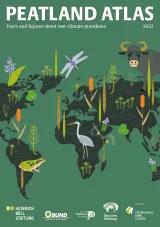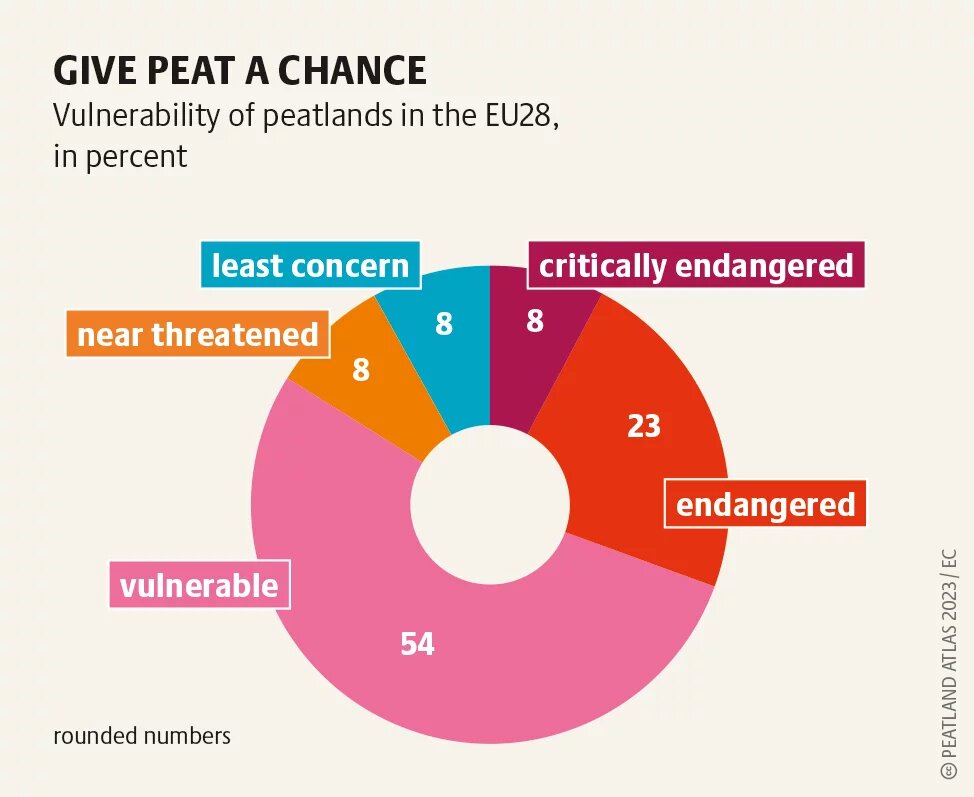
Humans have drained peatlands for centuries to provide land for farming and settlement. History may help us recognize the fallacies of supposed improvement, remember the presence of destroyed and often invisible peatlands in our landscapes, and advocate for the protection and restoration of peatlands.

In many parts of Europe, peatlands have largely disappeared as visible elements of the landscape. Centuries of drainage have reduced flood-protection areas and damaged habitats for plants and animals. Drainage has also held important implications for the global climate. Intact peatlands store more carbon than any other ecosystem in the world. When they are drained, the carbon that has accumulated and has been sequestered in the peat over thousands of years is exposed to oxygen, releasing vast amounts of the greenhouse gas carbon dioxide (CO2) into the atmosphere. Wildfires on drained peatlands accelerate this process. The history of peatland drainage is therefore a crucial chapter in the history of the current biodiversity and climate emergency.
Mentions of peatland drainage go back thousands of years. In continental Europe, wetland reclamation gained momentum in the 18th century, when monarchs, bureaucrats and educated elites developed drainage schemes to render peatlands useful. They often took inspiration from the Netherlands, where drainage and peat extraction contributed substantially to the country’s economic power in the early modern period. Europe’s elites believed that peatlands were mistakes of nature which had to be corrected through active human intervention for the sake of cultural and economic progress. Their ambition to improve the nature of peatlands devalued more sustainable uses of these ecosystems, such as fishing, hunting or the gathering of plants.
The reclamation of the Oderbruch – a marshland located along the Oder river in eastern Germany – under Frederick the Great of Prussia is a paradigmatic example of the modern drainage frenzy which caused the destruction of wetland ecosystems as a means of civilization. As a driver of settlement and agricultural expansion, the drainage of the Oderbruch has been celebrated as a triumph of human reason over recalcitrant nature and allegedly backward ways of life. It inspired drainage schemes in other parts of Europe.
Drainage schemes always reflected the social and political conditions of their time. The cheap, sometimes unfree, labour of marginalized population groups or convicts was repeatedly mobilized for the laborious reclamation work. Drainage appealed to various political regimes and projects. In the late 19th and early 20th century, it appeared to be a means to prevent the exodus of the rural population and to modernize the countryside. Land drainage became tied to autarky politics and social engineering efforts during the interwar period, when the governments of Poland and the Netherlands, among others, launched ambitious land-reclamation schemes.
In Germany, the Nazi regime openly linked land reclamation of peatlands with racist ideology. During World War II, Nazi planners sought to drain the land along the Pripyat River in present-day Belarus and northern Ukraine, which they wanted to be settled by German peasants instead of the Jewish and Slavic population. Although these plans were not implemented, the wetlands of eastern Europe became sites of the mass atrocities and genocides committed by the German occupation forces.
In the second half of the 20th century, peatland drainage became a function of agricultural productivism, commercial forestry and rural development on both sides of the Iron Curtain, often with the support of national governments. In the UK, landowners could avail of specifically designed drainage grants. In 1950, the West German government agreed to invest considerable resources to develop the Emsland, a poor region in Lower Saxony bordering the Netherlands. The construction of extensive drainage systems was a key element of the scheme, which profoundly changed the environment of the area. State involvement in peatland drainage was most intense in the socialist countries of eastern Europe, particularly in the Soviet Union. After the Soviet government established a Ministry of Land Reclamation and Water Management in 1965, the extensive peatlands of the Baltic republics, Ukraine, Belarus and in northern and western Russia became subject to massive drainage campaigns. The German Democratic Republic (GDR) also carried out ambitious reclamation works, most famously in the Friedländer Große Wiese in the country's northeast.
Drainage reclamation has left deep scars in the landscapes of Europe. Elements of agricultural and forestry infrastructure are markers of the damage done to people and land over centuries of peatland destruction. Livelihoods that used to accommodate intact peatlands have largely disappeared. Animals and plants that once inhabited these wet environments have shrunk in number or completely disappeared.
After centuries of peatland destruction a new paradigm has recently taken shape. While peatlands were long considered useless or dangerous spaces, they are now valued as unique environments. Despite increased support, however, the enormous potential lying in peatlands is far from being exhausted. Often used as farmland or grassland, drained peatlands have generally little in common with their wet, species-rich ancestors. Many are not even recognizable as peatlands. Taking a conscious look into the past makes us aware of the tremendous human and environmental damage linked to the history of drainage and reminds us that supposed improvement has rendered many peatlands invisible.


